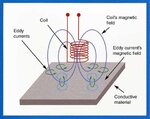aruleee
Newbie level 2
It converts given AC supply into Hi Frequency AC by means of inverter.
If it is transformer principle , If pan act as S.C why we did't get shock?
If it is transformer principle , If pan act as S.C why we did't get shock?
Don't post multiple threads with the same content, this is a warning.
Threads merged [alexan_e]
